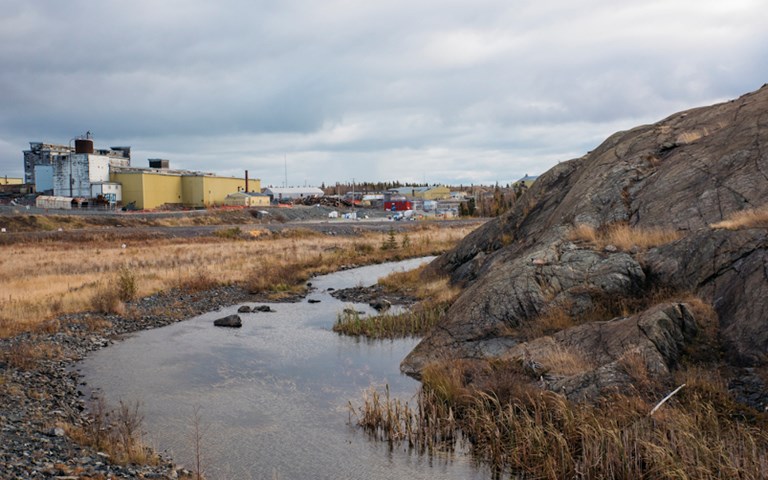The government of Canada has begun to focus on mine reclamation, creating relationships with universities and industry and investing $49.9 million over 15 years in 2019 to reclaim eight high-risk abandoned mine in the Northwest Territories and Yukon, such as the Giant mine (pictured). Courtesy of Crown-Indigenous Relations and Northern Affairs Canada.
Ten experts from the Université du Québec en Abitibi-Témiscamingue (UQAT) and the Polytechnique Montréal have written a new book summarizing current knowledge on mine reclamation, which they say is a first in the field.
The book, entitled “Hard Rock Mine Reclamation - From Prediction to Management of Acid Mine Drainage”, covers different approaches and solutions to mine reclamation problems, documents proven and innovative solutions and identifies remaining challenges to mine site reclamation. The 14 chapters present the main reclamation approaches and discuss topics such as the theoretical framework of mine reclamation, passive treatment systems, revegetation, mine waste management, monitoring, long-term performance and tools to improve the design of reclamation works.
Bruno Bussière, holder of the CRSNG-UQAT industrial chair on mine site reclamation and scientific director of the Research Institute of Mines and the Environment (RIME) UQAT–Polytechnique, and Marie Guittonny, professor of mine site revegetation at UQAT, began working on the book in the summer of 2016. The editors soon realized that the information on mine reclamation was disseminated among different books, guides and scientific articles, rather than integrated in a single text.
“[Following a market study,] we found that there is no such book that gathers information on mine site reclamation methods that already existed,” said Guittonny. “There are some books on physical stability of mine works… on mine waste, on ecological restoration of mine sites and [with] an ecological and biological point of view, but no specific book on reclamation methods to control acid mine drainage from an engineering point of view.”
Related: New technologies in environmental monitoring are making it easier than ever for mining companies to focus more on sustainability while minimizing the disruption of existing ecosystems
The fact that mine reclamation is a fairly young field compared to other aspects of mining may explain why this book is the first of its kind, but the two editors also believe that the particular team at RIME, who helped author the book and who are all specialized in different fields related to mines and the environment, might also be a reason why.
“We have a team [of] interdisciplinary experts who are used to working together, and that's rare,” Guittonny explained. “It's difficult [because] the vocabulary isn't the same, the methods used to work on the samples are not the same, there are some challenges. Through the years [we got] used to collaborating and working together in order to give integrated solutions to mine environment and reclamation programs, especially for this book.”
According to Bussière and Guittonny, they wanted the book to be accessible and to facilitate the transfer of knowledge to graduate students, though the book is also for mining and geo-environmental engineers and professionals working for mines and consulting firms.
“What we would like to see is this book in the department of [those] doing reclamation work, and if they have questions their first reflex will be to take the book and take a look at this chapter on this aspect… instead of starting from nearly nowhere or trying to find the information on the internet,” Bussière explained. “That's what I hope, [that] the book will be useful for people that are actually in training in universities and those that are actually working in the industry.”
While the book is based on the work that Bussière, Guittonny and their fellow researchers have worked on for years, they believe that institutional and industry support also played a key role. “It’s important to recognize that we [were] able to write this book because of the partnerships established few years ago between the governmental agencies, the mining industry and our universities,” Bussière said. “The fact that we had that support and that we have all these researchers that are dedicated to research related to mining and the environment, I think that explains why we are able to publish this book.”
“Hard Rock Mine Reclamation - From Prediction to Management of Acid Mine Drainage” will be released on Dec. 3rd and will be available digitally and in print.



